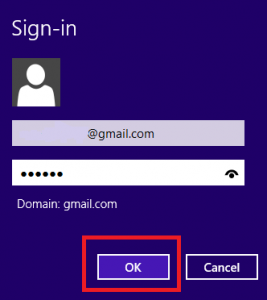Governments worldwide continue to tighten the noose around the internet’s neck and reinforcing censorship by giving more power to telecom companies and ISPs to store customer phone logs and internet data for law enforcement arguably to combat terrorism and crimes. Data Retention law will take effect in Australia, for instance, starting from October, 2015. Australian telecommunication companies and internet service providers will keep track of all call logs, emails, internet traffic data of their customers for at least 2 years. Australia’s Prime Minister explained:
“Metadata and its retention is more important than ever if we are going to be able to track what criminals are doing, whether it be criminals who want to commit terrorist offences, whether it be criminals who are committing corporate offences, whether it be people who are committing child abuse offences … so much of this kind of activity is being conducted online, and that’s why we need to keep this data, this metadata, this data-about-data.”
Last May, the German government proposed a revamped data retention law obliging providers to store call and internet metadata for 10 weeks and to store location information of internet users for 4 weeks. Other countries, like the Netherlands and the UK are considering the privacy-slaughtering law for national security reasons. Even Belarus will practise the data retention law by the beginning of 2016. However, the war on terrorism is also considered as a war on communication privacy and security on the internet. As a result, privacy-minded internet users all over the world have turned to other alternative methods, mainly virtual private networks (VPNs) in order to maintain their privacy on the internet.
How can VPN protect your metadata?
A virtual private network is one of the strongest and safest encryption tools used by internet users worldwide mainly to secure their personal data on the internet, surf the web anonymously, bypass geo-restrictions or unblock restricted web content. A VPN works by masking your actual IP address and replacing it with another one from an entirely different location. By changing your real geographical location, you become completely off grid and anonymous to all ISPs in the world. This means that your online activities can not be monitored or traced by the government or any other third party. Furthermore, VPN encrypts your data traffic before it is sent out on the internet, hence, giving you full data protection and optimal security against cyber criminals and data snoopers like: hackers and identity thieves. So you can evade data retention, browse the web in complete security and anonymity, carry out financial transactions as well as obtain infinite access to all restricted websites and services without having to worry about copyright violations or the internet police.
Evade data retention laws with L2TP over IPsec VPN
 Any L2TP connection is made of a tunnel and a session. “The tunnel provides a reliable transport between two L2TP Control Connection Endpoints (LCCEs) and carries only control packets. The session is logically contained within the tunnel and carries user data. A single tunnel may contain multiple sessions, with user data kept separate by session identifier numbers in the L2TP data encapsulation headers.”
Any L2TP connection is made of a tunnel and a session. “The tunnel provides a reliable transport between two L2TP Control Connection Endpoints (LCCEs) and carries only control packets. The session is logically contained within the tunnel and carries user data. A single tunnel may contain multiple sessions, with user data kept separate by session identifier numbers in the L2TP data encapsulation headers.”
L2TP over IPsec VPN maintains optimal level of security when a user sends out data over the internet. L2TP over IPsec VPN is one of the best and most secure encryption methods to evade data retention. You can also use L2TP over IPsec VPN “for routers at remote sites by using the local ISP and creating a demand-dial connection into corporate headquarters.” For L2TP over IPSec VPN connections, ” the IPSec security negotiation (IKE) uses certificate-based authentication for the computers themselves. L2TP performs user authentication by using either a domain\userid and password, or by using a smart card, certificate, or token card with the Extensible Authentication Protocol (EAP).”
How to setup L2TP over IPSec on Windows 8.1
Follow the steps below in order to successfully configure an L2TP over IPsec VPN connection on your Windows 8.1:
1) On Windows 8.1 move the cursor to the top or bottom right corner of the screen and click on “Search”.
2) Search for “Internet options”.
3) From the “Connections” tab, choose “add VPN”.
4) Enter (de.waselpro.com) for the Internet address and destination name
5) Then, click “Create”
6) Now choose “Connections” and click on “Settings”, then click on “Properties”
7) From the “Security” tab, select “VPN-type”, “Layer-2-Tunneling-Protocol with IPsec (L2TP/IPsec)”, then click on “Advanced settings” and select “Use preshared key authentication” and enter “sharedsecret” as key.
8) Click “OK” followed by another “OK”
9) To connect, move the cursor to the top or bottom right corner of the screen and click on “Settings”
10) Click on the “Network” icon
11) Choose the name of the connection you have just created (de.waselpro.com)
12) Enter your username and password, then click “OK”
You have successfully connected L2TP over IPsec VPN on Windows 8.1
How to setup L2TP over IPSec on MAC
Follow the steps in the tutorial video below to successfully configure L2TP over IPsec VPN connection.
https://www.youtube.com/watch?v=FmpHfnj9w0o&ab_channel=WASELVPN-HowTo(VPNTips)




